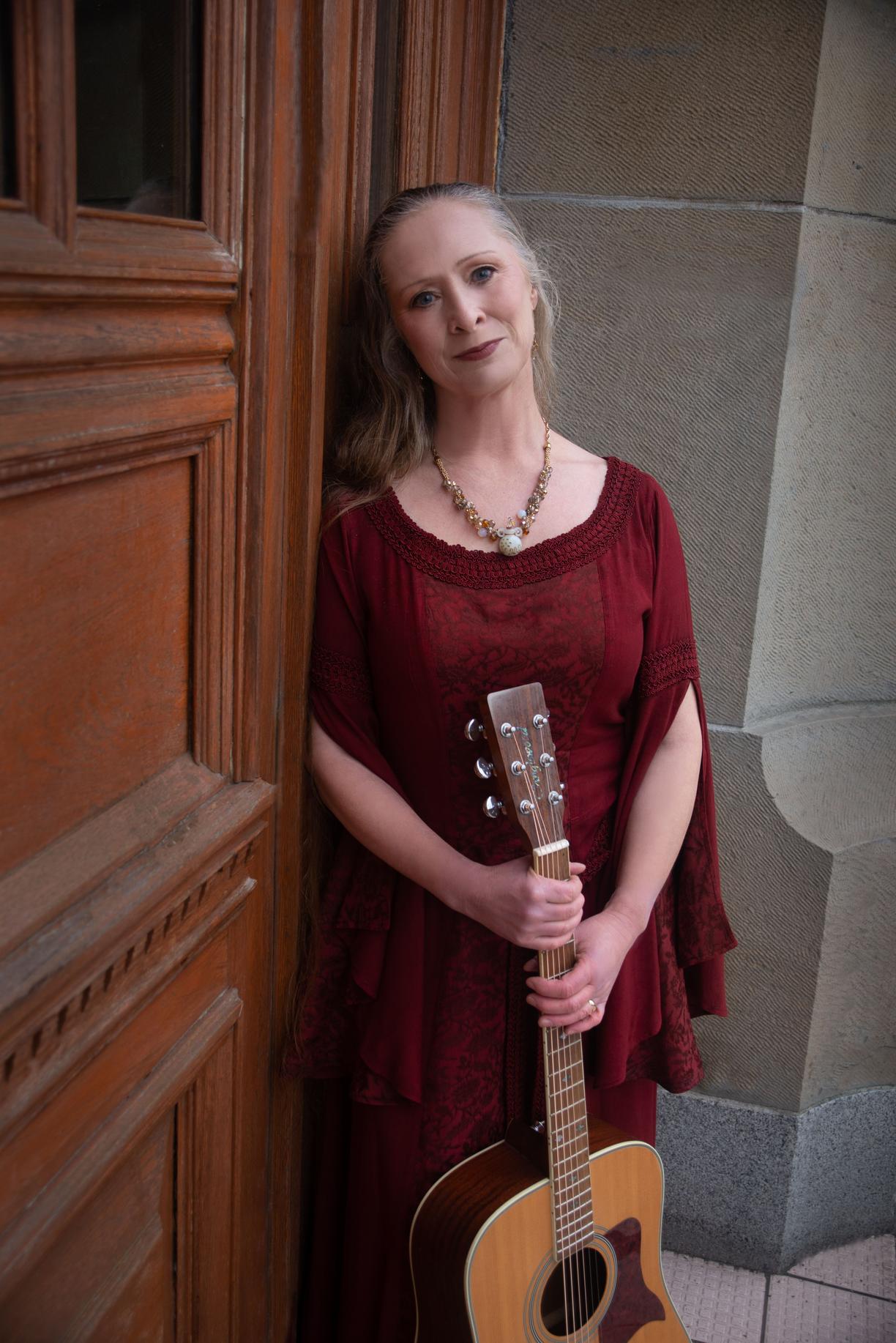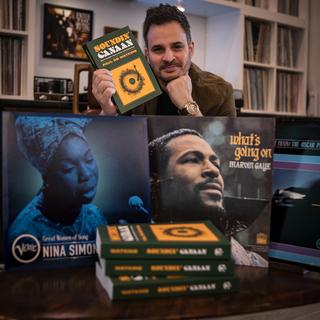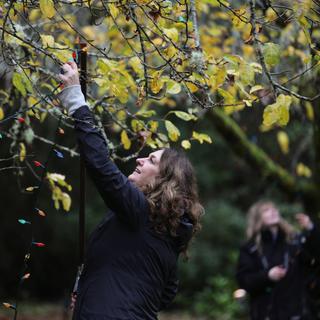Dr. Anna Atkinson, Professor, English.
Dr. Anna Atkinson believes that students learn best when they feel respected and safe. Throughout her career, she has demonstrated a continuous and deep desire for all students to thrive, see themselves in the coursework, and push themselves to grapple with challenging concepts. Her passion and proven ability to lead her students to success was recently recognized with the West Coast Teaching Excellence Award. Dr. Atkinson’s accomplishments have been recognized at VIU with a Provost’s Award for Teaching Design and Practice that Employs Innovative Practices for Student Learning. We discussed her classroom approach, the importance of universal design for learning in student outcomes and much more in a recent Q&A.
How long have you been teaching? Why did you choose it as the direction for your career?
I started teaching during my grad school years as a Teaching Assistant at Queen’s University—at least, that’s when I started teaching literature and composition. As for choosing a career direction—I didn’t, really. I suppose you could say that it chose me. I don’t think I really had a plan—just a passion for the subject. Once you’ve done a PhD in English, your career options are interestingly limited, though—so teaching is what I ended up doing.
Can you please expand on how you work Universal Design into your classes/courses?
I consider access to education, at all levels, to be a right. When I think about designing courses, I’m always trying to provide an environment where no one has to ask for special access. Some students learn best by reading; others learn better when listening to a recording or watching a video. Some benefit from listening while reading. Some students have vision impairments, some are hearing impaired, and some may be neurodiverse. Thus, it seems to me that the best way forward is to provide both written and audio-visual formats for anything like a “lecture.” That’s one example!
There are also really simple technical things such as font style choices which are important. Sans serif fonts are read much more easily by text-to-voice software than serif fonts, so I try to implement them as much as possible.
I’ve also found that using and adapting a pedagogy like Team-Based Learning [TBL] is extremely helpful, since it focusses on students assisting and learning from each other. Particularly in blended and online environments, which I tend to use a lot, it allows students to do their work in the way that suits their learning styles (and schedules) best. It gives students a lot of autonomy and limits the amount of time they spend listening to me banging on!
I often wonder about the amount of control we exert over students, as this in and of itself strikes me as a rather colonial approach to education. Obviously there need to be boundaries, but within them, I try to allow for as much freedom as possible. TBL allows this because the basic structure has me setting up problems for students to solve, and then asking them to solve those problems in groups or teams. The activity and engagement level is incredible, and the outcomes are so much stronger with this kind of approach that I’m a big advocate for its use. The neat thing about TBL is that none of the “grades” of the course are linked to the teamwork—only the learning. This provides some safety and security for students and reduces the perception of risk. This means that students are braver about voicing their ideas, which results in some incredible discussions. I am constantly amazed by the quality of work that results when I use this form of pedagogy.
One other place where Universal Design for Learning comes into play is in the way students are allowed to express their comprehension and proficiency with the learning outcomes of the course. Some courses (such as composition courses) really do require writing—and in particular scholarly writing—as part of the demonstration of proficiency. But some years ago, I noticed that students who were exceptionally gifted in short-form writing, or in other really creative approaches to analysis and critique of literature and culture (which is at the core of my discipline) were not great at essay writing. It bothered me that they were not able to access the same degree of success as students who fit more comfortably into the standard academic “mold” of my discipline, even though they were often incredible thinkers. My discomfort increased when I realized that my learning outcomes often didn’t include “essay writing,” particularly in upper-level courses—or if the learning outcomes did include "essay writing,” it was there because I simply had expectations around the traditions of my academic discipline: traditions that needed to be challenged. Now, part of my commitment to accessibility is to ensure that students have, whenever possible, alternative ways to show their grasp of the course material that include everything from the building of web archives to the construction of blogs or vlogs or podcasts, to the creation of online glossaries or critical editions of public-domain texts. Students often come up with their own ideas as well: I currently have projects in one of my classes ranging from the writing and illustration of a children’s picture book to a quilt that tells a narrative.
The way our world currently looks, we need as broad a range of diverse and creative thinkers working together as possible. Letting students know that their gifts are as valuable as the gifts of those who fit the “normalized” frame that academia has presented us with for generations is critical.
You work to ensure the voices of non-dominant cultural influences are present in your classes. What are some of your favourite authors to teach? How do you find your students respond to this approach?
What a great question! I don’t think I have favourites, but I do tend to migrate toward writers whose works really expose social injustices in ways that are accessible, if uncomfortable. Tochi Onyebuchi’s Riot Baby reveals the way in which the US penal system discriminates against non-white people better than any essay I’ve ever read and asks difficult questions about the use of violence in the face of this. Helena Maria Viramontes’s Under the Feet of Jesus does the same with migrant farm workers and some forms of environmental injustice. Cherie Dimaline and Waubgeshig Rice are two Canadian Indigenous authors whose works use speculative fiction to query colonial practice and its costs. N. K. Jemisin’s Broken Earth trilogy takes on the complexities of race and disability and age in powerful ways. There are too many fantastic authors to list—but the interesting thing is that the braver I get with my choices, the more engaged students become. One of their favourites during the pandemic was Severance, by Ling Ma, and only in part because it actually predicted the arrival of a pandemic and the need for N95 masks that many of us hadn’t heard about five years ago. Another author that caused special excitement was Rumaan Alam’s Leave the World Behind. That novel was published in October of the year the course was taught—students were excited to be the first to write about a new work of literature. Our students are deeply interested in social justice, environmental justice, human rights, international solidarity, and reconciliation. I think they find in these books a reflection of their own concerns. In studying them, they are able to access their own voices in ways that give them hope.
Is there anything on the horizon you are excited about and want to share? Future projects?
Well, after a four-year hiatus due to COVID I’m back to my annual Christmas Concert Food Bank Fundraiser! So you’re all invited to buy tickets to that and support a good cause! More seriously, one thing I really hope that I have time to dig into in the near future is a study—perhaps almost a manifesto—that brings together my interest in speculative fiction and my interest in Biblical studies, particularly apocalyptic narratives. Apocalypses have been co-opted by largely white, largely male authors, and have been long misunderstood as predicting the end of the world. In fact, they do no such thing. Rather, they address an oppressed minority in ways that assure the target readership that their suffering has meaning and purpose, is cosmic in the sense that it is the result of a battle between good and evil, and will eventually end. Apocalypses don’t predict the end of the world, but they do project a particular likely outcome if current behavioural paradigms continue to be followed, and this outcome is the ending of a world, not the world. However, traditional apocalypses also always foresee a new world arising: one that is based in justice, freedom, and peace. This is why the so-called apocalypses by white male authors tend to be pretty pessimistic: the world tends to be set up in their favour and on their terms at the moment. The end of that world might be pretty grim for those who already have a great deal of privilege. People of colour, people who are non-heterosexual or non-gender-conforming, Indigenous people, people with disabilities, the youth whose future is being brought into question by the combined pressures of economic and environmental collapse: these are the people who can more rightly claim the apocalypse as their genre. Apocalypses are powerful texts. The term “apocalypse” comes from Greek, and means “to reveal” (literally, to remove a veil). They have a way of using cosmic symbology to reveal something about the world around us right now. I’d like to lift that up into the light.
Do you have a favourite genre you read for pleasure? Favourite author at the moment?
Speculative fiction has always been my jam. Right now I’m reading Wabgeshig Rice’s sequel to Moon of the Crusted Snow, which is entitled Moon of the Turning Leaves. But that’s because it just came out this month! I’m always prowling around and looking for apocalyptic fiction that speaks to our current culture in ways that illuminate it, and I’m always looking for books my students will love.





